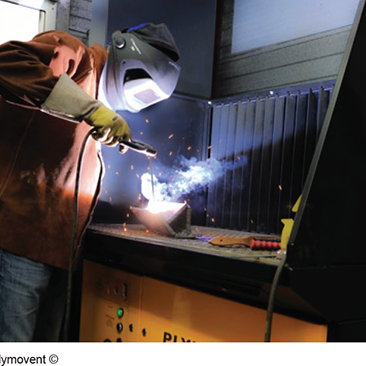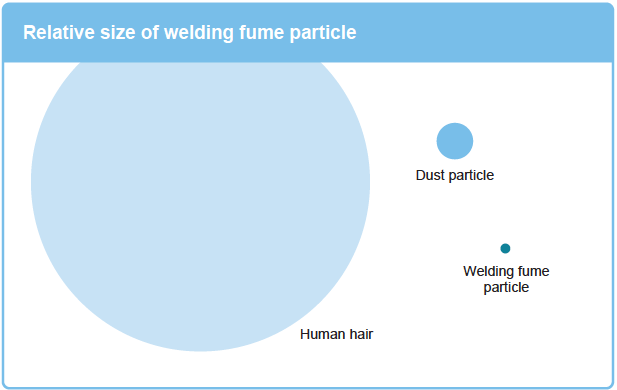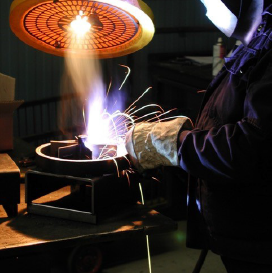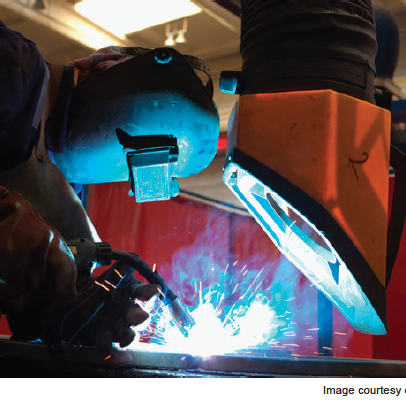Many welders are exposed unnecessarily to welding fume. Control measures are available – but it’s important to make sure the right controls are used – there is not one solution that will be effective in all cases.
For example, local extraction systems with moveable arms are frequently used, but to be effective they need to be positioned close to and directly over the source of the fume. Other types of extraction, such as welding benches and on-gun extraction for MIG welding, are also readily available and, depending on the type of job, these are better options for many types of work.
Respiratory protection should always be the last resort, but it will be the most appropriate control measure for some types of work – particularly very large fabrications where the use of local extraction is impracticable. Powered devices which are built into the welding visor are likely to be most effective.
In order to identify appropriate measures to control the health risks involved, each specific welding activity will need a risk assessment under the Control of Substances Hazardous to Health (COSHH) regulations.





